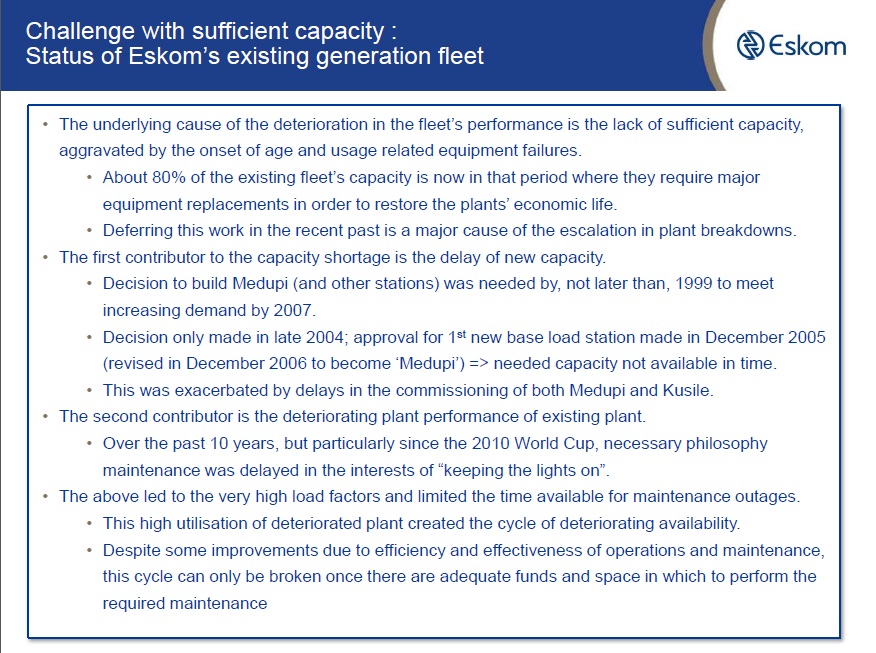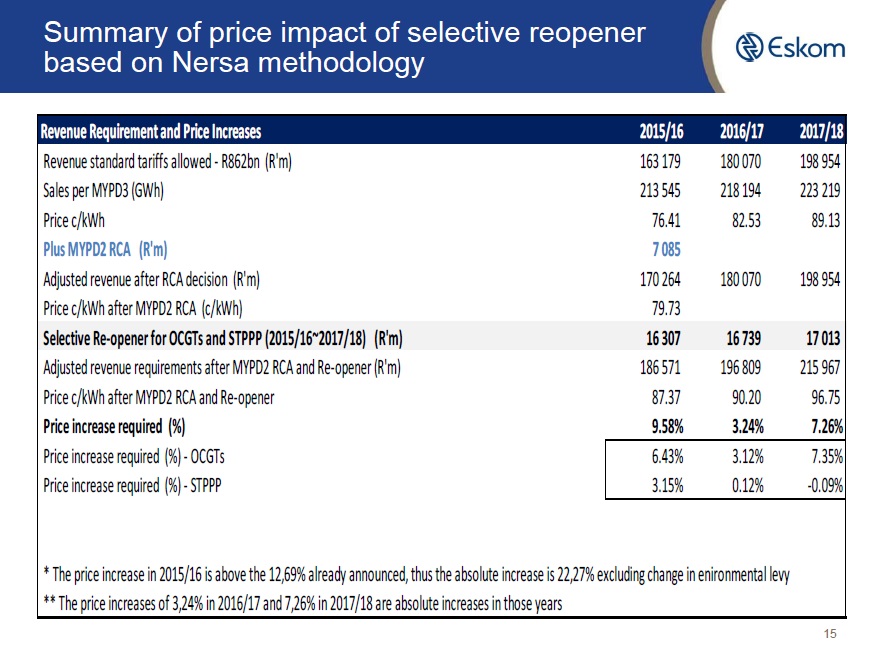South Africa’s National Energy Regulator (Nersa) will today hear arguments from the public and Eskom Acting CEO Brian Molefe on whether or not the electricity supplier should be allowed to increase tariffs – as applied for in April.
According to Molefe’s presentation to Nersa, released by Fin24, Eskom needs R11bn per year to power its open cycle gas turbines (OCGTs), R5.8bn funding per year for short-term contracts with independent power producers (STPPP) and further funds for an increased environmental levy.
 It also points out that Eskom had to borrow money to run the OCGTs in 2014 and 2015, and that the amount requested will include the recovery through the RCA process.
It also points out that Eskom had to borrow money to run the OCGTs in 2014 and 2015, and that the amount requested will include the recovery through the RCA process.
Eskom says it’s applying for the increase in tariffs because it wants to minimise load-shedding.
“This expenditure will contribute towards Eskom creating space to do necessary maintenance whilst mitigating the impacts of future load-shedding,” the report says. “[This] requires an adjustment of 10 per cent linked to the extraordinary costs to limit load-shedding.”
One of the factors contributing to the lack of power generation, Molefe will explain, is that some plants, like Medupi took, too long to come online.
“[The] decision to build Medupi (and other stations) was needed by, not later than, 1999 to meet increasing demand by 2007. [The] decision [was] only made in late 2004; approval for 1st new base load station made in December 2005 (revised in December 2006 to become ‘Medupi’). This was exacerbated by delays in the commissioning of both Medupi and Kusile.”
The second factor is the deteriorating plant performance of existing plants. “Over the past 10 years, but particularly since the 2010 World Cup, necessary philosophy maintenance was delayed in the interests of ‘keeping the lights on’.”
“High and increasing reactive maintenance, and the resultant decreasing amount of proactive maintenance, are the direct result of the constrained system, aggravated by the reduced plant reliability and also by capital expenditure constraints,” the presentation reads.
According to Molefe, the National Treasury view point on the situation is as follows:
- Eskom’s weak financial position and resulting downgrade of Eskom’s credit rating is recognised
- Only option for healthy financial position and minimise load-shedding is increasing tariffs
- Need immediate adjustments to assist with current liquidity challenges, and begin strengthening towards a financial sustainability.
- Cost of load-shedding is R9 to 15 per kWh.
- Only increases for 2015/16 year supported. Further tariff increases once substantial information towards ‘cost-reflective’ or long-run marginal cost tariff level is.
- Support NERSA in-principle approval of STPPP costs for 2015/16
- In-principle support by Government for OCGT’s to prevent load-shedding. Must motivate for exact levels
Throughout many media briefings, Eskom has repeatedly stated that it needs to 10% increase in the electricity price to keep the OCGT running, and this is once again stressed in the Nersa presentation.
The full presentation from Brian Molefe can be viewed on SlideShare.
[Image – CC by 2.0/Ian Britton]




